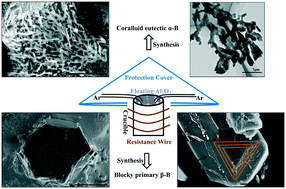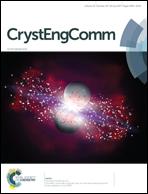Growth mechanisms of alpha-boron and beta-boron in a copper melt at ambient pressure and its stabilities
Abstract
Relying on copper melt as a solvent, we successfully synthesize alpha-boron (α-B) and beta-boron (β-B) at ambient pressure. Distinct obtained allotropes ascribe to different fabrication processes and growth mechanisms. Coralloid eutectic boron exposes the messages of α-B, and primary boron has the typical traits of β-B. Considering experimental conditions and morphologies, constituent supercooling with appropriate temperature gradients is chiefly responsible for the growth of α-B. Moreover, a proper eutectic temperature and restricted growth space are provided by copper melt for α-B. For the formation of β-B, cyclic-twinning, screw dislocation-driven and the twin plane re-entrant edge (TPRE) growth mechanisms work together. Boron's growth models were put forward for vivid elucidation of these mechanisms. Thereafter, the stabilities of α-B and β-B were compared based on their forming conditions and sizes. Synthesis of α-B and β-B in copper melt at ambient pressure are of great significance for their practical applications in future.



 Please wait while we load your content...
Please wait while we load your content...